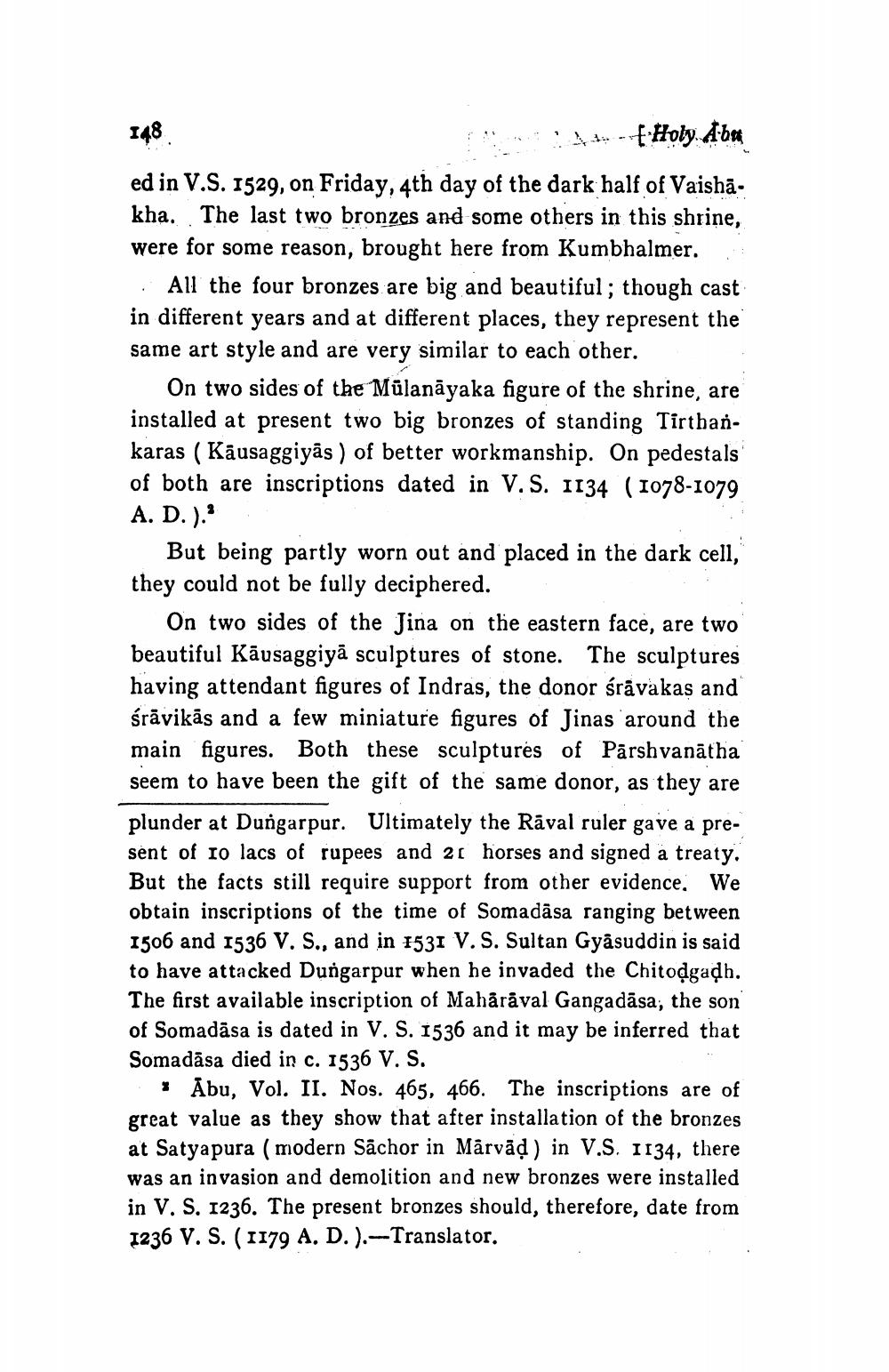________________
Holy Abu
148.
ed in V.S. 1529, on Friday, 4th day of the dark half of Vaishakha. The last two bronzes and some others in this shrine, were for some reason, brought here from Kumbhalmer.
All the four bronzes are big and beautiful; though cast in different years and at different places, they represent the same art style and are very similar to each other.
On two sides of the Mulanayaka figure of the shrine, are installed at present two big bronzes of standing Tirthankaras (Kausaggiyās) of better workmanship. On pedestals of both are inscriptions dated in V. S. 1134 (1078-1079 A. D.).3
But being partly worn out and placed in the dark cell," they could not be fully deciphered.
On two sides of the Jina on the eastern face, are two beautiful Kausaggiya sculptures of stone. The sculptures having attendant figures of Indras, the donor śrāvakas and śravikas and a few miniature figures of Jinas around the main figures. Both these sculptures of Parshvanatha seem to have been the gift of the same donor, as they are plunder at Dungarpur. Ultimately the Raval ruler gave a present of 10 lacs of rupees and 21 horses and signed a treaty. But the facts still require support from other evidence. We obtain inscriptions of the time of Somadasa ranging between 1506 and 1536 V. S., and in 1531 V. S. Sultan Gyasuddin is said to have attacked Dungarpur when he invaded the Chitoḍgadh. The first available inscription of Mahārāval Gangadāsa, the son of Somadasa is dated in V. S. 1536 and it may be inferred that Somadasa died in c. 1536 V. S.
Abu, Vol. II. Nos. 465, 466. The inscriptions are of great value as they show that after installation of the bronzes at Satyapura (modern Sachor in Mārvāḍ) in V.S. 1134, there was an invasion and demolition and new bronzes were installed in V. S. 1236. The present bronzes should, therefore, date from 1236 V. S. (1179 A. D. ).-Translator.




